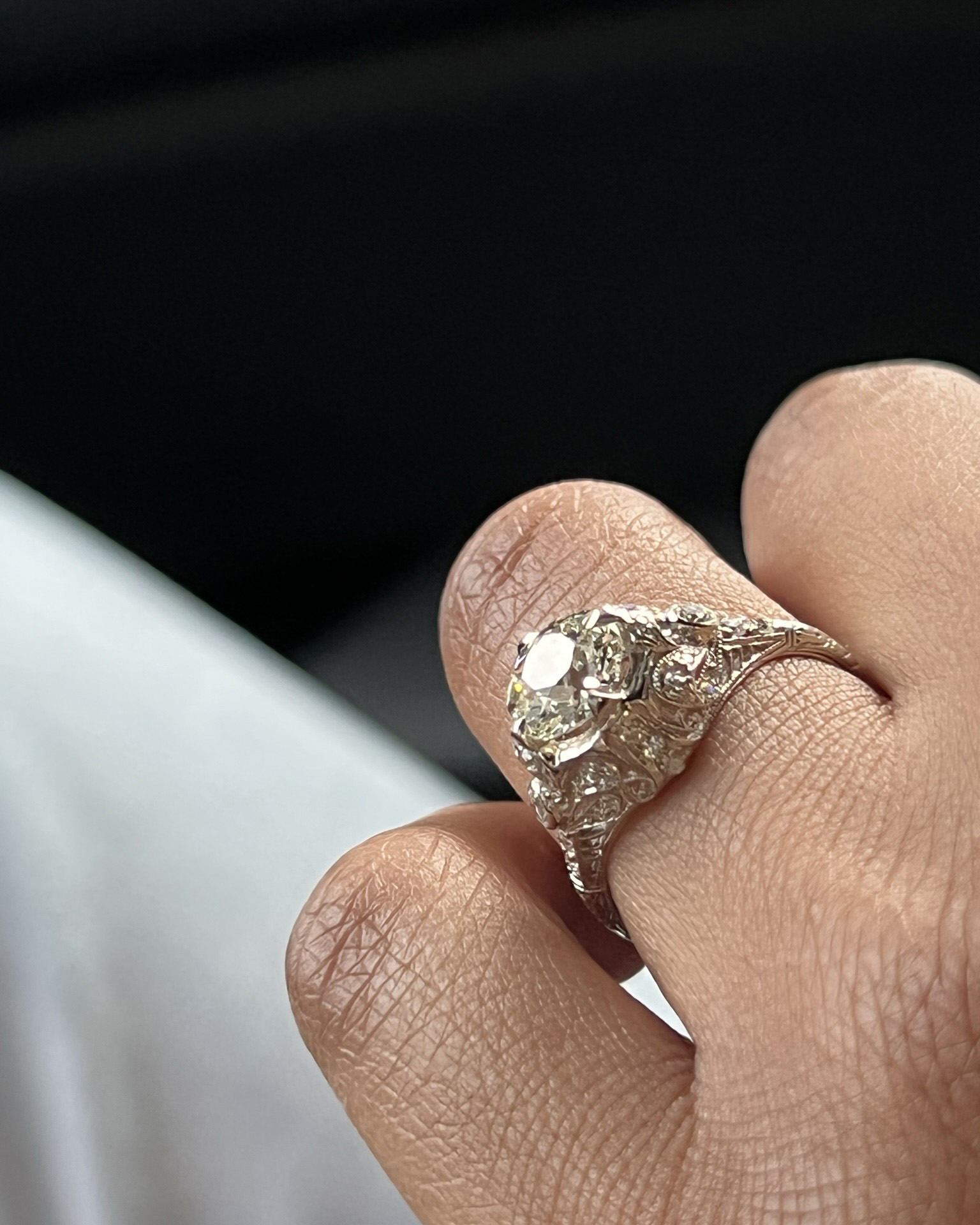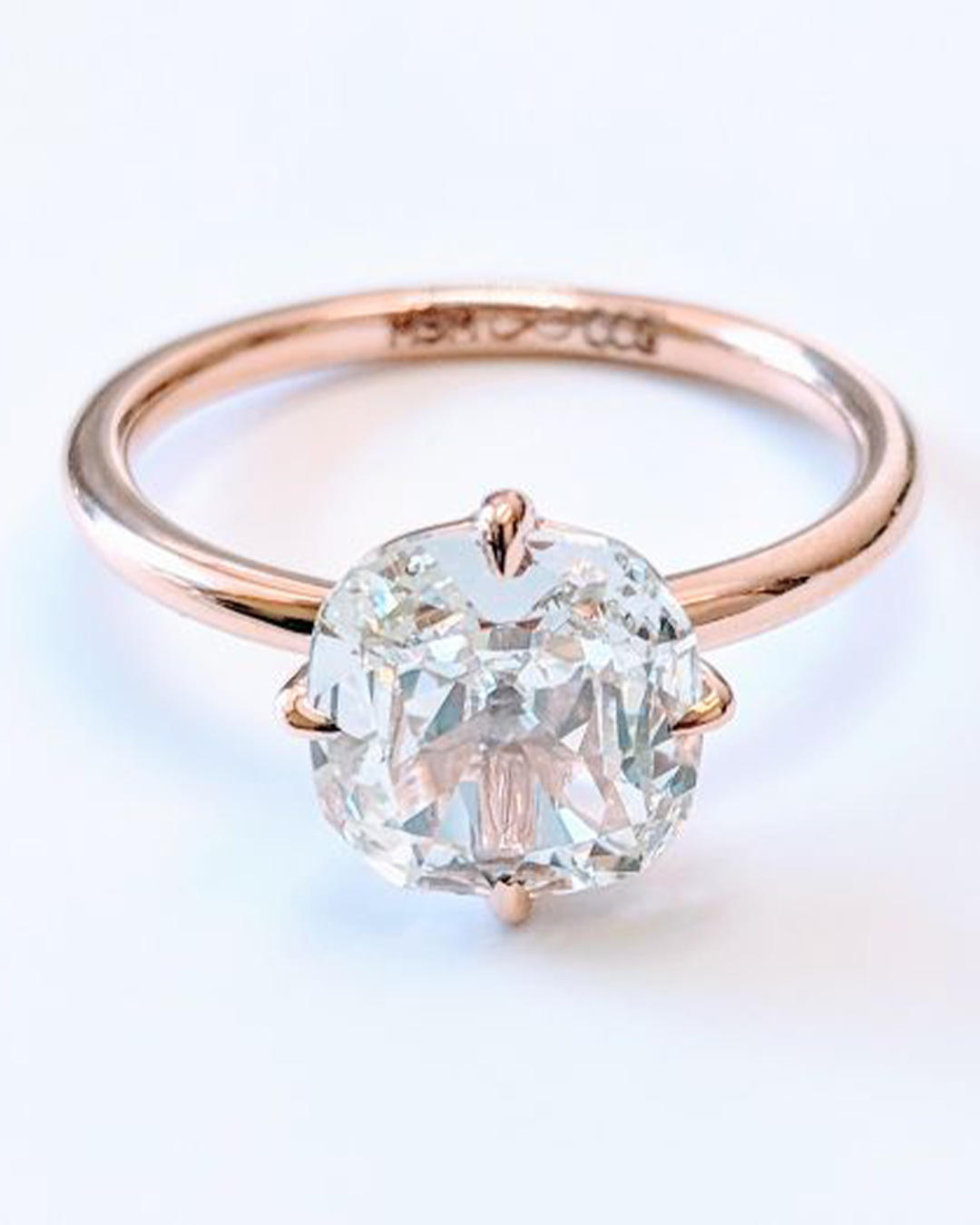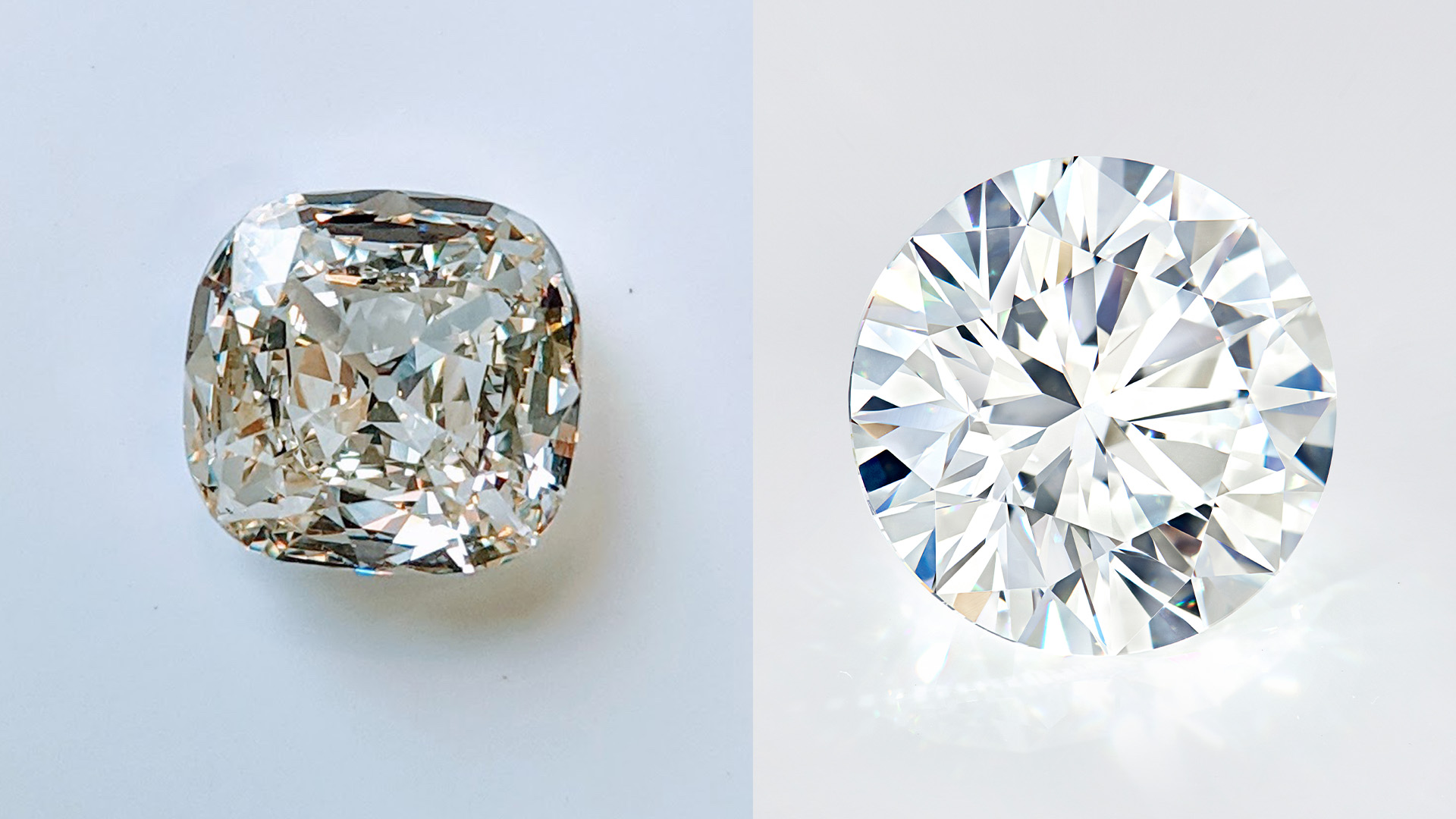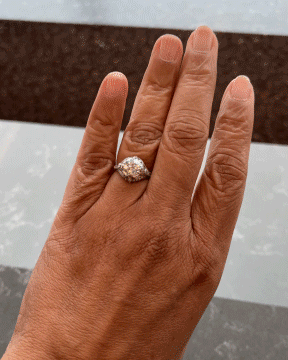Why A Vintage Cut Natural Diamond Could Be Your Perfect Engagement Ring
These antique cuts are unique and special, just how your engagement ring should be!
Let’s face it, finding the so-called perfect engagement ring is a fun task—but perhaps not the easiest one. After all, the list of considerations in your search (including budget, center stone, number of stones, metal type, era, carat weight… you get the picture) can feel overwhelming to say the least. However as a self-proclaimed jewelry addict and GIA Graduate Gemologist, I like to keep my criteria very simple.

I wanted a platinum-set antique old mine cut or old European cut that measured a minimum of three carats. Simple, right? Not so fast! My fiancé wanted to buy a ring that reflected his modern taste and values despite the fact that I would be the one wearing it.
Whether you agree or not that your partner has a say in the selection process, there’s a good chance you may not be present to offer your partialities (especially with all the surprise proposals circulating on social media), so if you think things are getting serious, you may want to start dropping hints or initiate a conversation around your dream ring.
So, how did I find my dream Edwardian-era old European cut diamond engagement ring, set in uber icy platinum—the one with everything I ever wanted and more?
Antique diamond cuts such as the old mine cut and old European cut diamond are very distinctive in appearance. As you’ll learn, the facet arrangements in these antique cuts have an identifiably chunky appearance, allowing them to throw off big flashes of fire and patterns of scintillation (AKA bling) that enchants the wearer (and anyone watching) with the slightest flick of the hand.

I’ll start with the history of the old mine cut and old European cut. Old mine cuts feature 58 facets, including a visible culet (the small facet at the bottom of a finished gem) that originated in the 1700s with a squarish shape; culets vary in dimensions from one stone to the next, which gives each diamond a singular look. The look is so distinctive that once you’ve seen one, it won’t be difficult to recognize when you see it again.
The invention of the bruting machine in 1874 partially mechanized the diamond cutting process, which allowed cutters to create greater scintillation, rounded outlines, and better weight retention, resulting in the old European cut, which has the same 58 facets—including a visible culet—and is the predecessor of today’s modern brilliant cut.
Nowadays, you are most likely to find old mine cut diamonds in Georgian jewelry (1714—1837) while most diamond jewelry from the Victorian era (1819—1901), Edwardian era (1901—1914) and the Art Deco Period (1915-1935), mostly used the old European cut.

One of the reasons some engagement ring shoppers are leaning toward these older diamond cuts is the scintillation and fire (dispersion of color) they give off. Since the facets are larger and were not as precise as the modern round brilliant cut, the patches of color are mesmerizing and give a completely different presence on social media snaps. Today’s brilliant cut has evolved even further with more modern technology, which is why two round brilliant diamonds can appear to be identical to the human eye. Remember though: no two natural diamonds can ever be exactly alike.
If you prefer a larger carat size, you can start with the old mine cut or old European cut since it can be possible to get those cuts found in antique jewelry for less than a modern round brilliant cut in a smaller carat size costs. And who doesn’t like getting more for less?
Want the best of both worlds? May I suggest you also consider the cushion cut, which beautifully marries antique and modern. It has a squarish, pillow-shaped outline, with brilliant, sharp facets.

I searched for a long time for my ideal diamond engagement ring and finally found it at a secondhand store. It checked all the boxes for me, and the price was amazing. My fiancé was also happy with it (doubtless because I was so happy), and he spent less than he anticipated. If you are going the estate sale or secondhand route, always shop from a trusted source.
Just as important, be sure to get a guarantee that you can return the ring if after taking it to an appraiser, the ring is not what you were sold. An appraiser can inspect the condition and let you know if any stones are loose, or if any damage is present, while also accurately identifying if the stone(s) are of natural origin, not lab grown or simulant. Similarly, if you decide you want a contemporary engagement ring, the best practice is to have it appraised independently of the store from which you purchase it.
All in all, it’s important to know the many options out there to help you secure your ideal diamond engagement ring, something that you will likely have a lifetime and conceivably pass on as an heirloom. Take care to keep your engagement ring clean, store it safely and properly when not wearing and have it inspected every six months by your favorite jeweler. Happy hunting.
